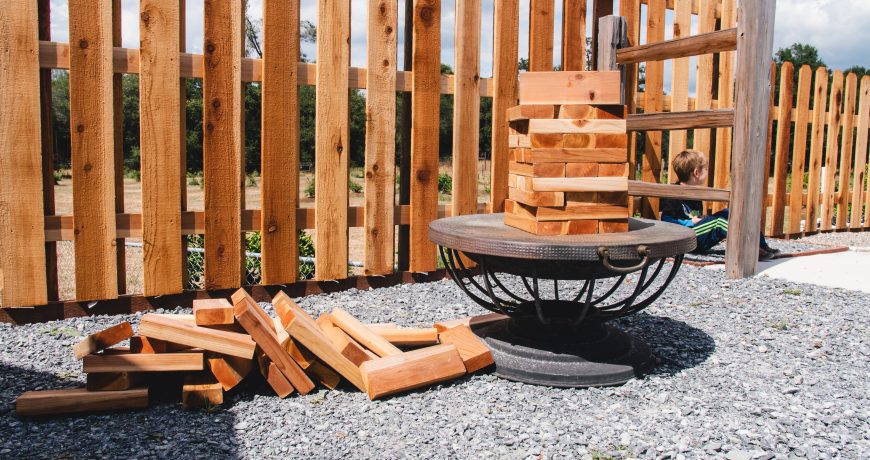Redwood vs Cedar Fence: Cost, Aesthetics, Longevity, and Other Differences to Consider
Enhancing your property with a new fence will reinvigorate your home and add value for years. While pine is a contender for smaller budgets, if you want a wood with lasting durability and natural beauty, you must ultimately choose between cedar vs redwood fences.
A redwood or cedar fence will work wonders for your property, but you want to ensure you maximize your investment. The decision between cedar or redwood for fences has more nuances than you may think.
Thankfully, we’ve compiled this guide comparing and contrasting the redwood vs cedar fence to help you make the right choice for your property. From cedar vs redwood fence costs to which one serves as the best security fencing, we’ve got you covered.
But before we decide between redwood or cedar fences, we’ll need to first look at each type in detail, so let’s jump right into it.
Overview of Cedar Fencing
While there are several species of cedar to choose from, we’ll focus on the premier option for fencing and wood construction: western red cedar.
Red cedar shines when used for fencing projects, thanks to its natural oils and resins, which make it highly resistant to rot, insects, and decay. Considering these natural resistances, how long does a cedar fence last?
Red cedar fences can last up to 40 years when treated, a considerable difference from other wood species like pine, which have lifespans of around 10-15 years.
Cedar fencing is also extraordinarily low maintenance throughout its lifespan. Installation is simple, as red cedar is lightweight and works well with most foundations. Additionally, upkeep is a breeze, as you won’t need to start restoring cedar fences until several years after their installation.
Aesthetically, cedar won’t fade or discolor like other treated woods over time. It maintains a warm, rustic appearance, whether left natural or painted.
Red cedar boards with tight knot grades are also extremely smooth and won’t cause dangerous snags or scratching when pets or children interact with the fencing.
Thanks to its worry-free upkeep, aesthetic appeal, and impressive durability, red cedar ranks comfortably among the best options for fencing.
Overview of Redwood Fencing
What about the other half of the redwood vs cedar fence debate? Redwoods evoke imagery of towering, majestic trees, and fences made of redwood boards try to live up to that standard. Redwood fence boards feature red-brown hues that weather to a silver color over time.
Fences made with redwood can last anywhere from 15 to 25 years in some cases, thanks to the lumber’s natural durability and thickness. Like red cedar, redwood is simple to maintain over its lifespan.
Redwood boards have a unique aesthetic design that may or may not fit your tastes. The natural colors and knots of redwood offer a rustic and timeless design, but the material is more challenging to paint and stain than other species.
Cost is also a central part of the redwood vs. cedar fence debate. The average cedar vs redwood fence cost can mean you spend thousands of dollars more on installation.
Now that you understand both types of lumber in detail, it’s time to get into our debate of redwood fences vs cedar.
Redwood vs Cedar Fence: Which is Better for a Fence?
Let’s explore the cedar fence vs redwood fence comparison across a few key categories. We’ll need to contrast a redwood fence vs cedar in terms of cost, aesthetic appeal, lifespan, sustainability, and upkeep to find the right fit for your property.
Cedar vs Redwood Fence Cost Comparison
Installing a new fence onto your property is an important investment, and you should treat it with the same respect as any budgeting decision. There is a big difference in cedar vs redwood fence costs, and making the wrong choice could put you in a financial hole.
Red cedar fencing will average around $2 to $4 per linear foot, while redwood boards will run you anywhere from $8 to $12. Professional installers may charge extra to work with redwood due to the complexity involved, adding to your costs.
Even when considering the additional lifespan of a redwood fence vs cedar, there’s a clear winner regarding affordability. Red cedar prices are more reasonable and cost-effective compared to redwood.
Which Will Look Better on Your Property?
If your goal is aesthetic appeal, which option between cedar or redwood for fences will work best?
Both types of wood offer a natural, rustic aesthetic with natural grain patterns that complement nearly every property. However, there’s an advantage to choosing a cedar fence vs redwood, as painting cedar fences is significantly easier than redwood.
Redwood fences require specialized primers and knowledge to paint correctly. Plus, the natural oils in redwood will bleed through any paint unless the job is done perfectly, causing the aesthetic quality of the lumber to drop. On the other hand, red cedar looks fantastic in any color you desire!
You can’t go wrong choosing either cedar or redwood for fences, though red cedar offers slightly more customization than redwood. Additionally, either type of lumber can act as privacy fencing for your property, thanks to the versatility of cut options.
Durability and Longevity
When making such a crucial investment into your property, you want peace of mind that your fence will stand the test of time. The cedar fence vs redwood fence debate requires some long-term thinking regarding the lifespan of each wood type.
Red cedar lasts up to 40 years when treated, thanks to its natural oils and resistances that withstand rot and decay. So, how does the other side of the redwood vs cedar fence debate fare in terms of longevity?
Redwood boards can last anywhere from 15 to 25 years thanks to their thick density and natural resistance against rot and decay. Given the shorter lifespans and higher costs of redwood, red cedar fences are also a key winner in this category.
Maintenance Requirements
If you are searching for a low-key, accessible fencing material, either material is an excellent choice. Learning how to clean cedar fences and redwood fences is easy, as both require minimal upkeep other than light sanding and the occasional wash.
You also have the option of sealing cedar fences or redwood fences to extend their respective lifespans.
Environmental Factors
Finally, the red cedar vs redwood fence debate features some nuance regarding environmental impact. Both tree species are renewable when managed with responsible forestry practices and biodegradable at the end of their lifespans.
Red cedar has a smaller carbon footprint than redwood since the lumber is up to four times lighter, saving on transportation and fuel costs. Additionally, red cedar trees have harvesting cycles of around 60 years, compared to the 100+ years of redwood trees.
So, is Redwood or Cedar Better for a Fence?
Okay, we’ve looked at each type of fence in detail, but how can you choose between a redwood or cedar fence?
With both cuts of lumber sharing so many similarities regarding aesthetic value, sustainability, and durability, the small things count. Red cedar equals or beats out redwood in every category.
With the redwood vs cedar fence debate settled, there’s only one thing left for you to do – find the right supplier for your property!
Get the Best Cedar Fence Pickets in Texas at Big Tex!
Making the right choice in the cedar fence vs redwood debate is only half the battle. Thankfully, there’s a simple solution to the latter half: using Big Tex for all your red cedar fencing needs!
We are the premier producer and supplier of western red cedar fences in Austin and San Antonio, operating in Texas for over 50 years. Our mission is to deliver quality products that adapt perfectly to the needs of your property.
Over the decades, we’ve come to understand the local climate intimately. We believe that there are no one-size-fits-all projects when it comes to fencing. Instead, our knowledgeable team will use our centuries of combined experience in sales and construction to assist you in crafting a personalized solution for your needs.
Whether you need inspiration for your next project, have questions about the differences in lumber cuts, or just want to learn more about our products, our friendly customer support team is here to help. You can also check out our wood fence gallery to help spark some ideas for your next project!
Final Thoughts on the Cedar vs Redwood Fence Comparison
Overall, the debate of redwood vs cedar fences is hotly contested. Both cuts of lumber offer unparalleled durability, environmental sustainability, and aesthetic value. However, the massive gulf in price between the affordability of red cedar and the enormous upfront cost of redwood is vital to consider.
As such, we wholeheartedly red cedar in most cases, thanks to its reasonable cost and a slight edge in every category compared to redwood.
If you enjoyed our redwood vs cedar fence comparison, check out our blog! We’ve released in-depth analyses similar to this one, like aluminum fences vs wrought iron, chain link fences vs wood, and pine vs cedar fences.
Otherwise, if you are searching for western red cedar fences in San Antonio, Austin, and throughout Texas, you’ve come to the right place. Big Tex is the #1 brand for western red cedar lumber in the area, with a storied reputation for quality dating back over five decades.
Call us today at 1-(800)-252-8117 or stop by our Texas stores in Austin and Dallas to learn more about how you can transform your property with the help of red cedar fencing!

